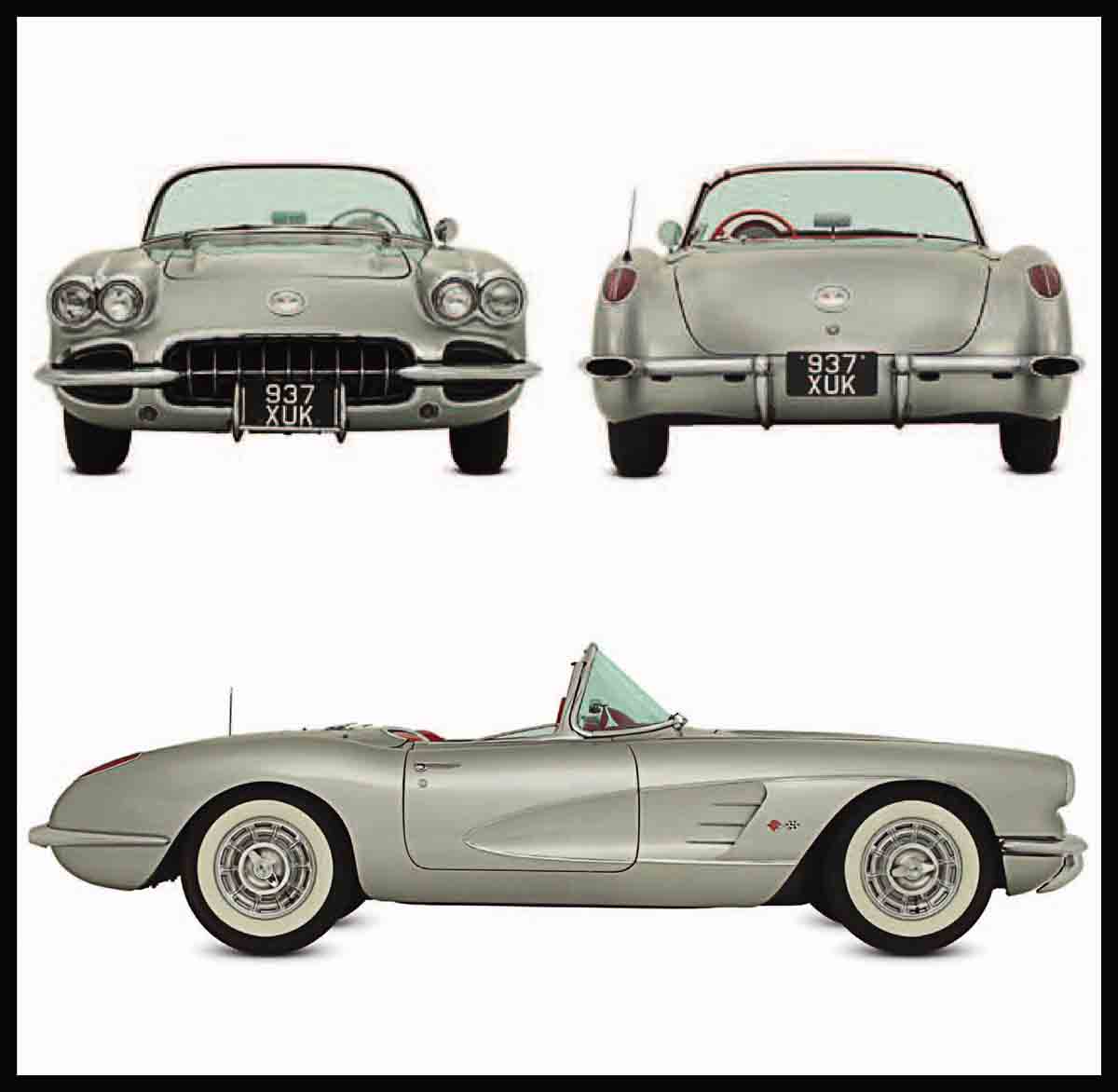
Chevrolet Corvette
Launched in 1953 as a fiberglass two-seater convertible in the style of contemporary European models, the Corvette was America’s first production sports car. Initially fitted with a six-cylinder engine, the Corvette began to fulfill its potential only when it was given a V8 power plant. A series of redesigns-including the 1963 split-screen Sting Ray Coupe and “Mako Shark” 1968 Stingray-kept the model fresh. With around 1.5 million made to date, the Corvette has earned the title of the oldest U.S. sports car still in production.
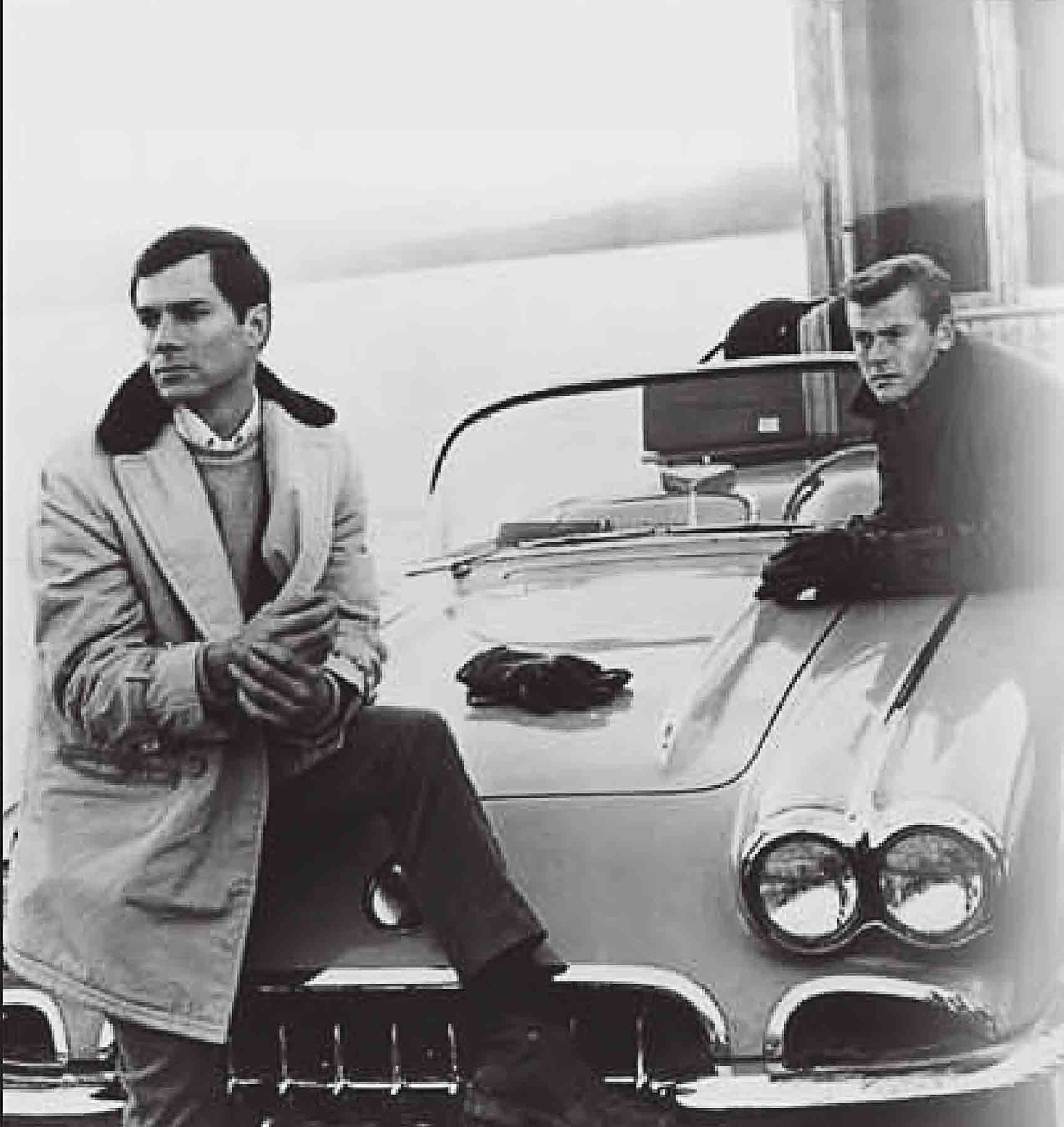
THE BRAINCHILD of Harley Earl, design chief at General Motors, the Corvette appeared to great acclaim at GM’s 1953 Motorama sales show. But the model had a slow start, with just 300 sold in its first year. Despite its racy styling, the Corvette’s six-cylinder engine was seen as insufficient for power-hungry U.S. buyers. With the model in real danger of disappearing. Corvette’s fortunes were turned around in 1955 by the 265 cu in (4,342 cc) V8 with manual transmission. Coupled with a body redesign in 1956 and engine upgrades over the next few years, the first-generation Corvette became one of America’s hottest automobiles. The ornate second generation and muscular third series took the model into the 1980s. Now in its sixth generation, the Corvette’s styling sees a return to its European-influenced roots.
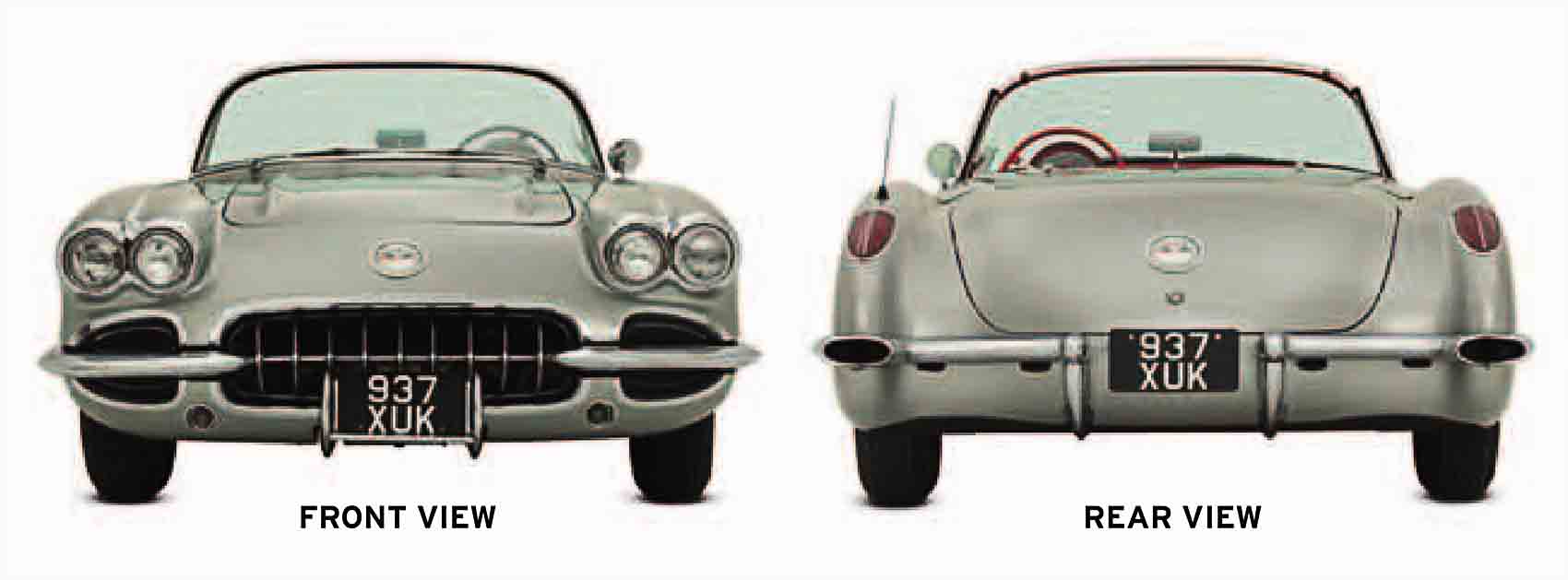
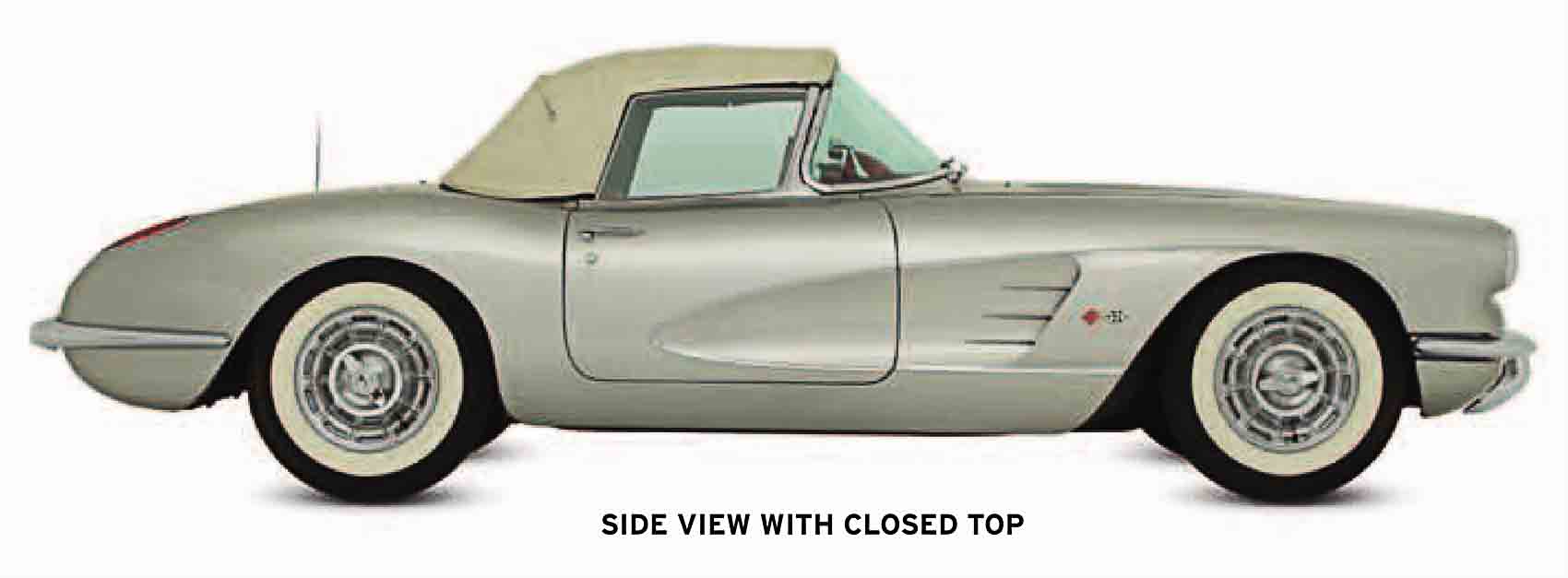
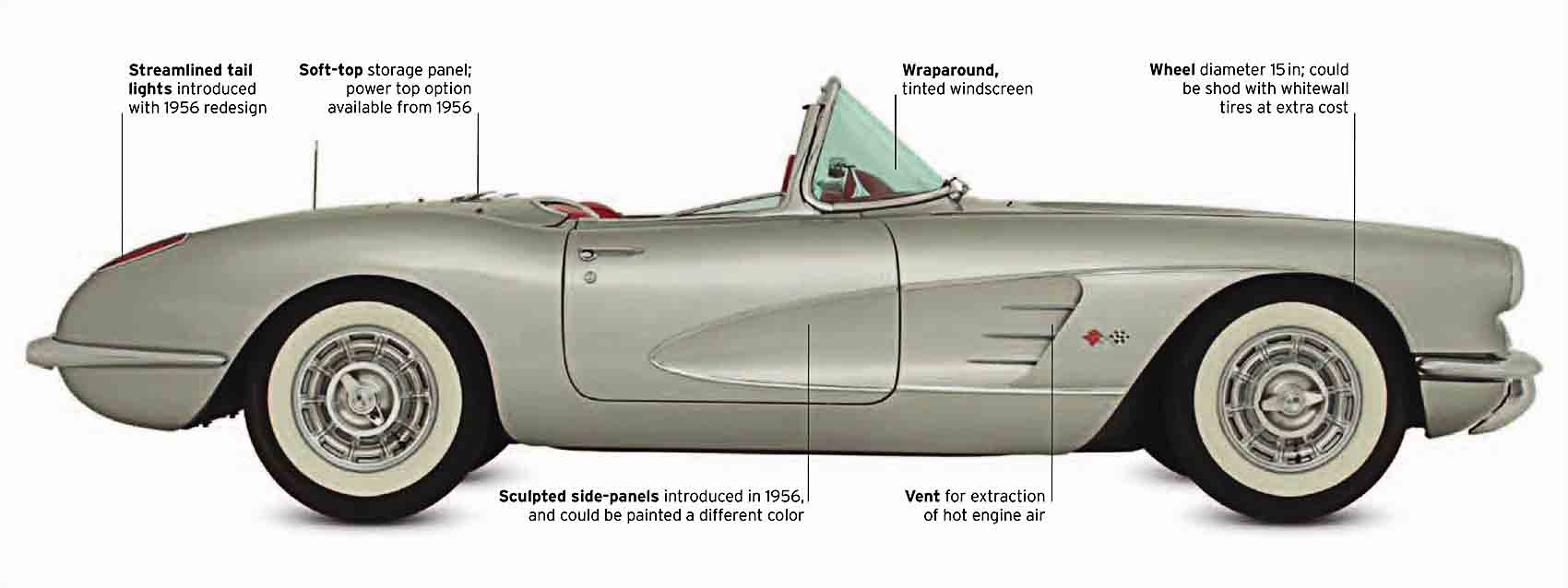
PECIFICATIONS
| Model | Chevrolet Corvette Mk I (1953-62) |
| Assembly | Michigan and Missouri, USA |
| Production | 68,915 |
| Construction | Welded box section |
| Engine | 265 cu in (4,291 cc), V8 |
| Power output | 150-360 bhp at 4,200-6,200 rpm |
| Transmission | Two-speed Powerglide automatic |
| Suspension | Front independent, rear rigid axle |
| Brakes | Drums front and rear |
| Maximum speed | 142 mph (229 km/h) |
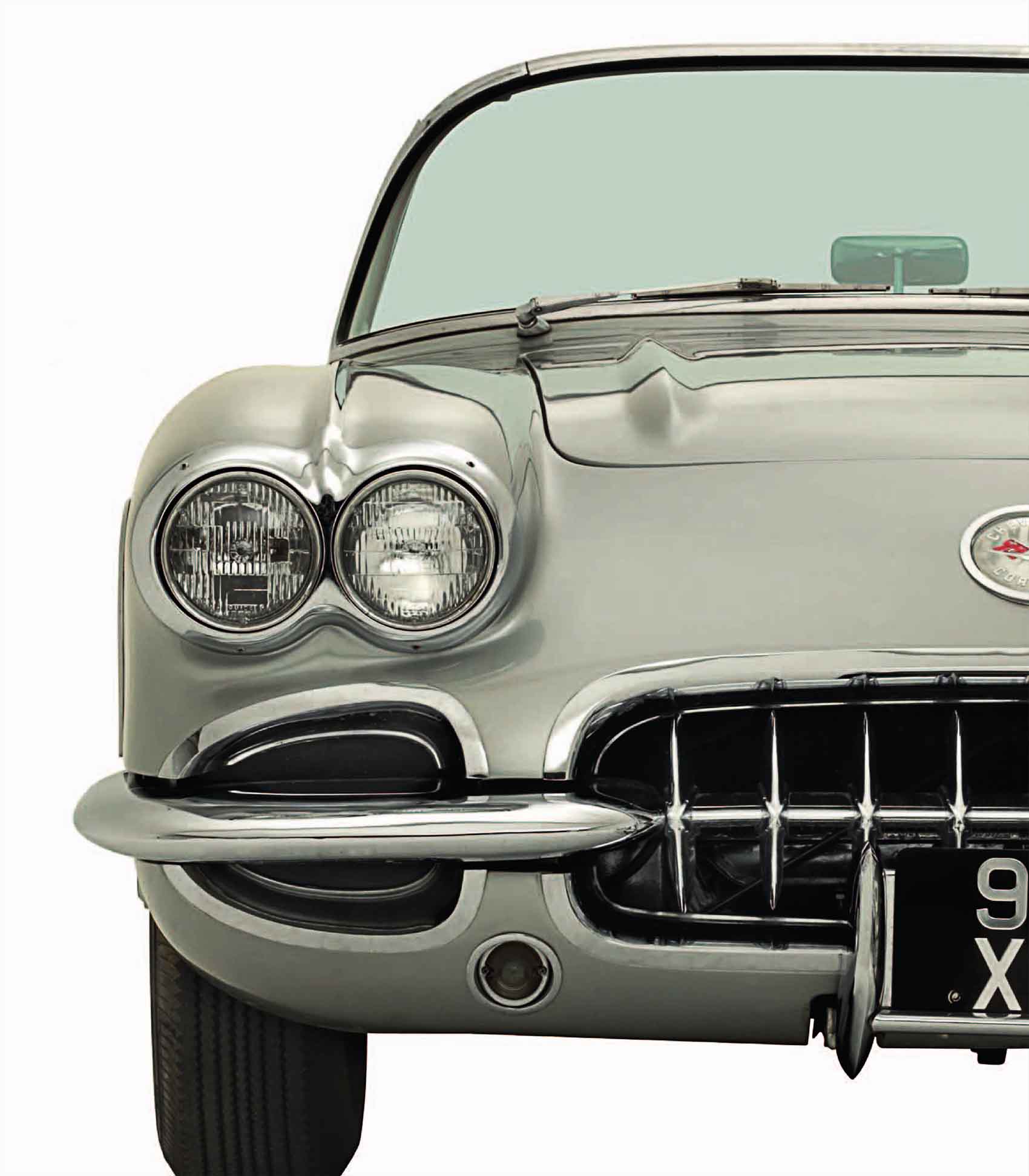
Determined styling
Harley Earl conceded that the open-tooth style of the grill was copied from Ferrari models of the time. When combined with the ridged hood and four headlights-introduced in 1958 to replace the two headlights of the early models-it gave this 1959 Corvette an aggressive frontal appearance, one that would become even meaner with later generations of the model.
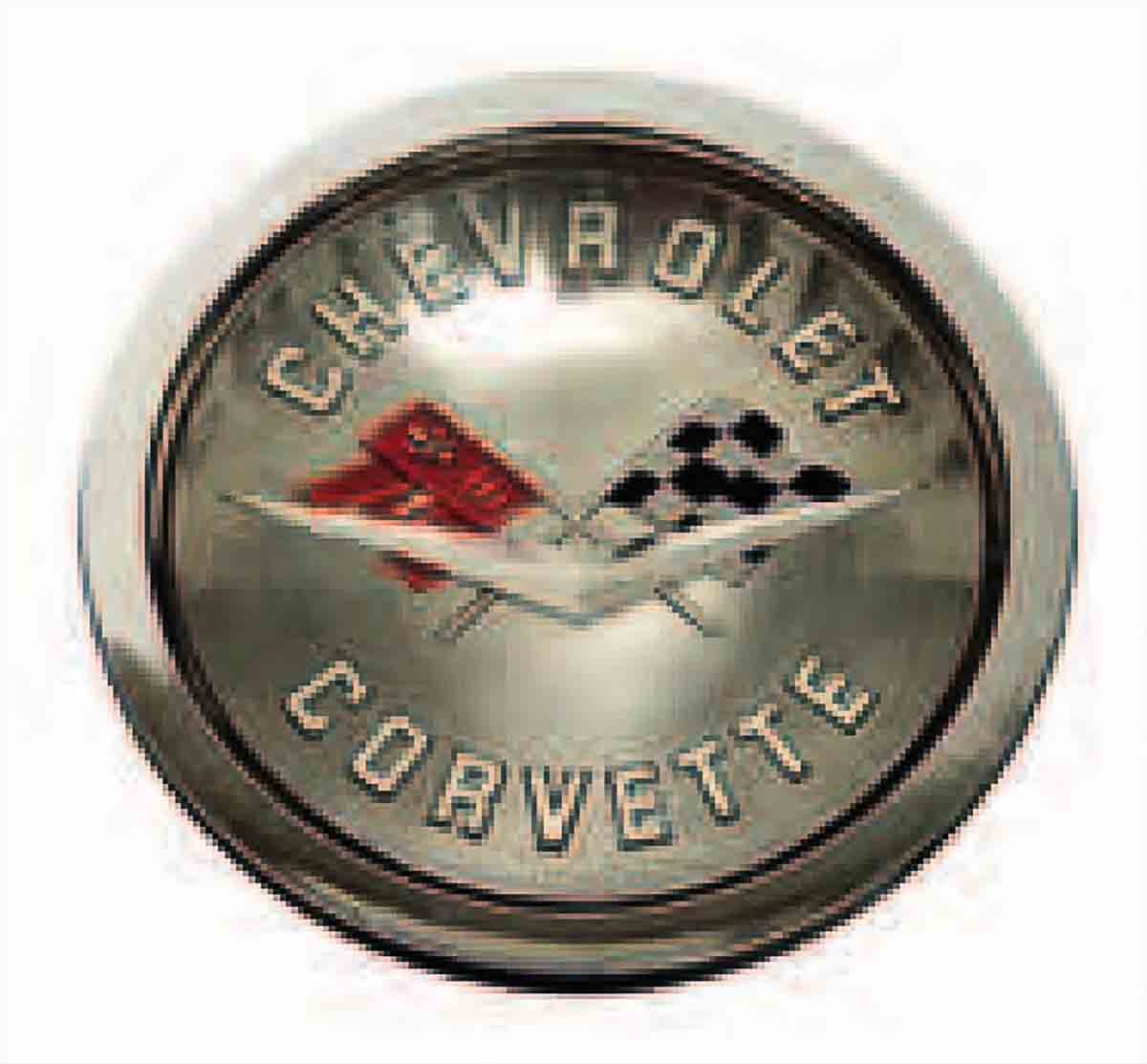
Flagged Up
Originally designed in 1953 by Chevrolet’s Robert Bartholomew, the Corvette logo consists of two flags, one chequered to reflect its racing character, and the other featuring a fleur-de-lys—a nod to company founder Louis Chevrolet’s French roots.
THE EXTERIOR
The Corvette’s unique fiberglass body set it apart from its rivals—a 1959 advertisement led with the line “From a Different Mold.” On a practical level, it gave the model significant weight-saving advantages over the competition. A redesign in 1956 included the addition of coved, or sculpted, body panels and revised taillights. This Inca Silver was one of seven color options available in 1959.
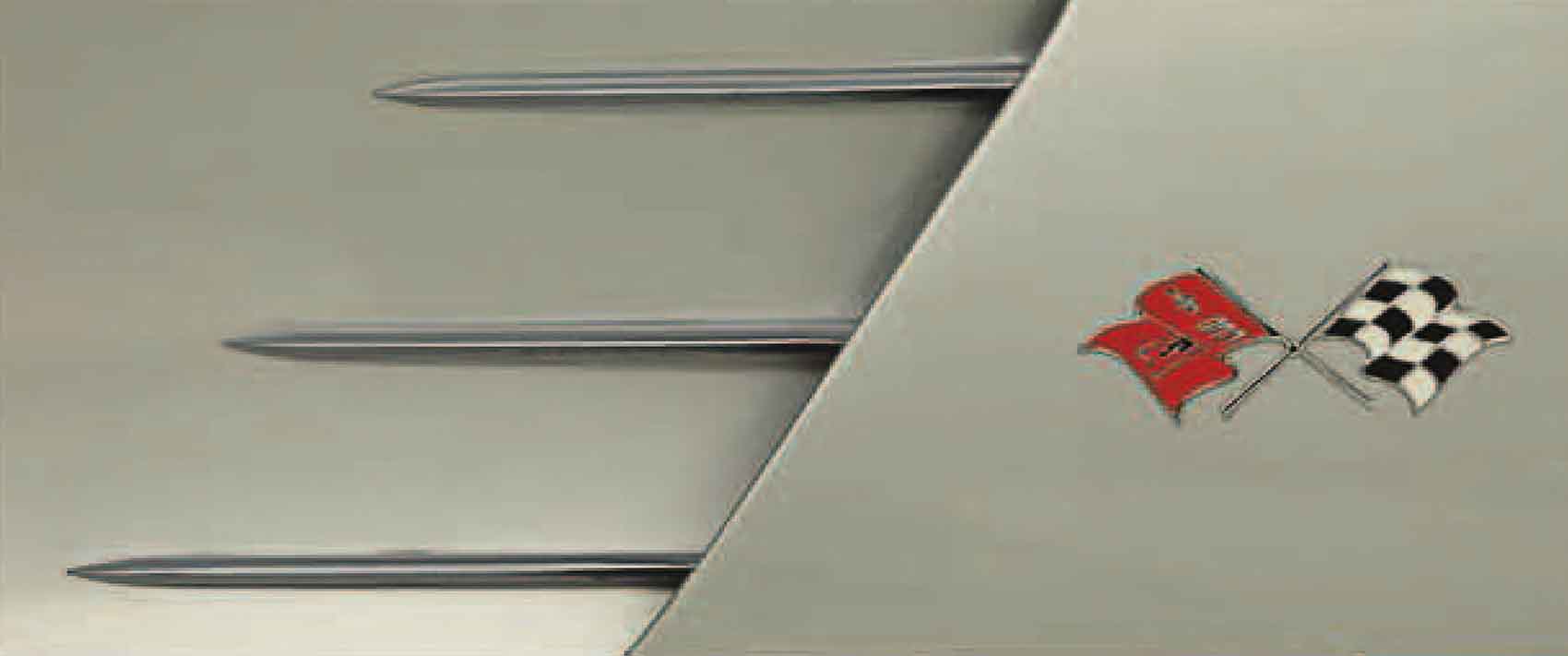
Flags alongside cooling vent
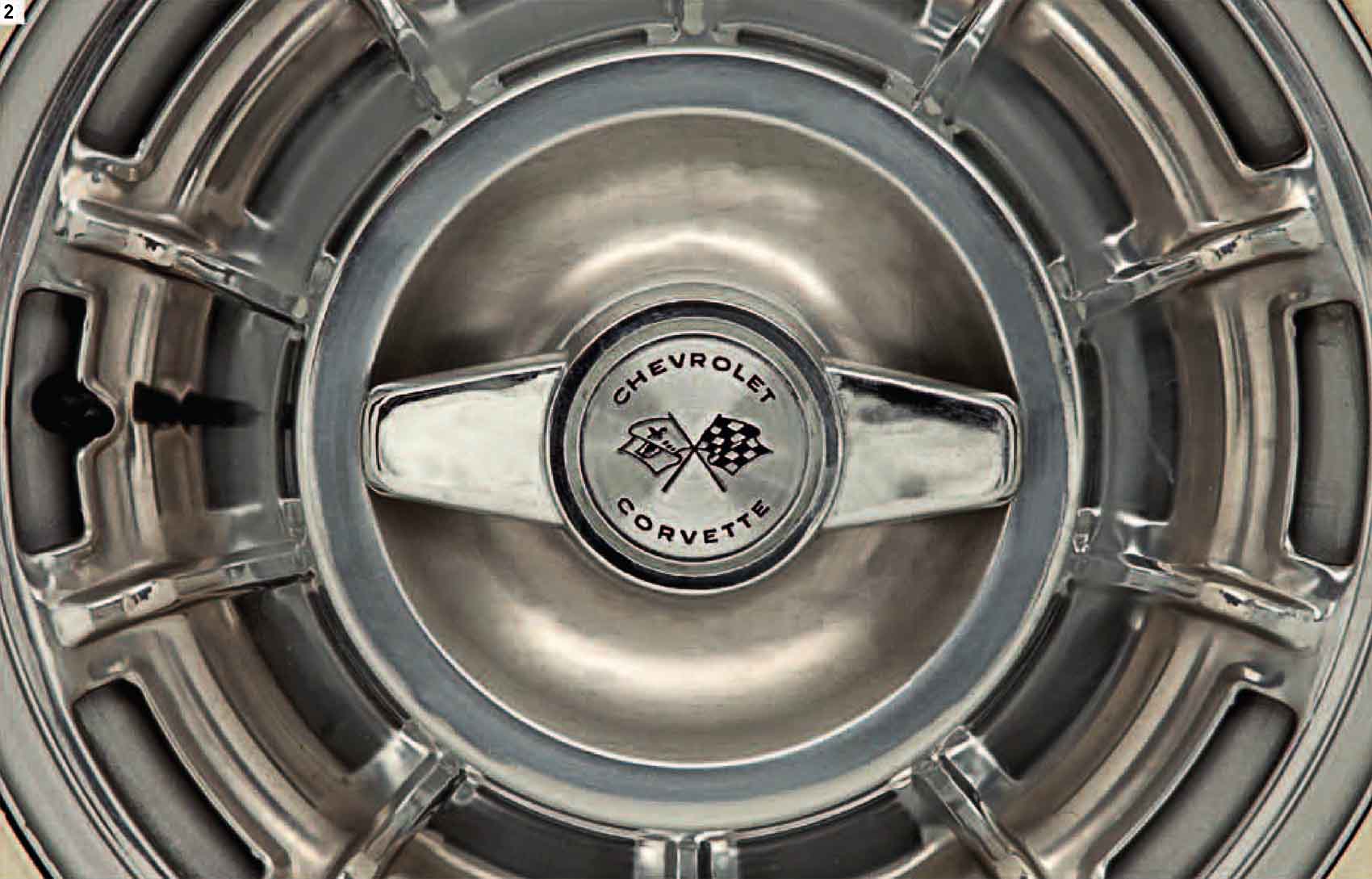
Knock-off hubs were elaborate wheel covers
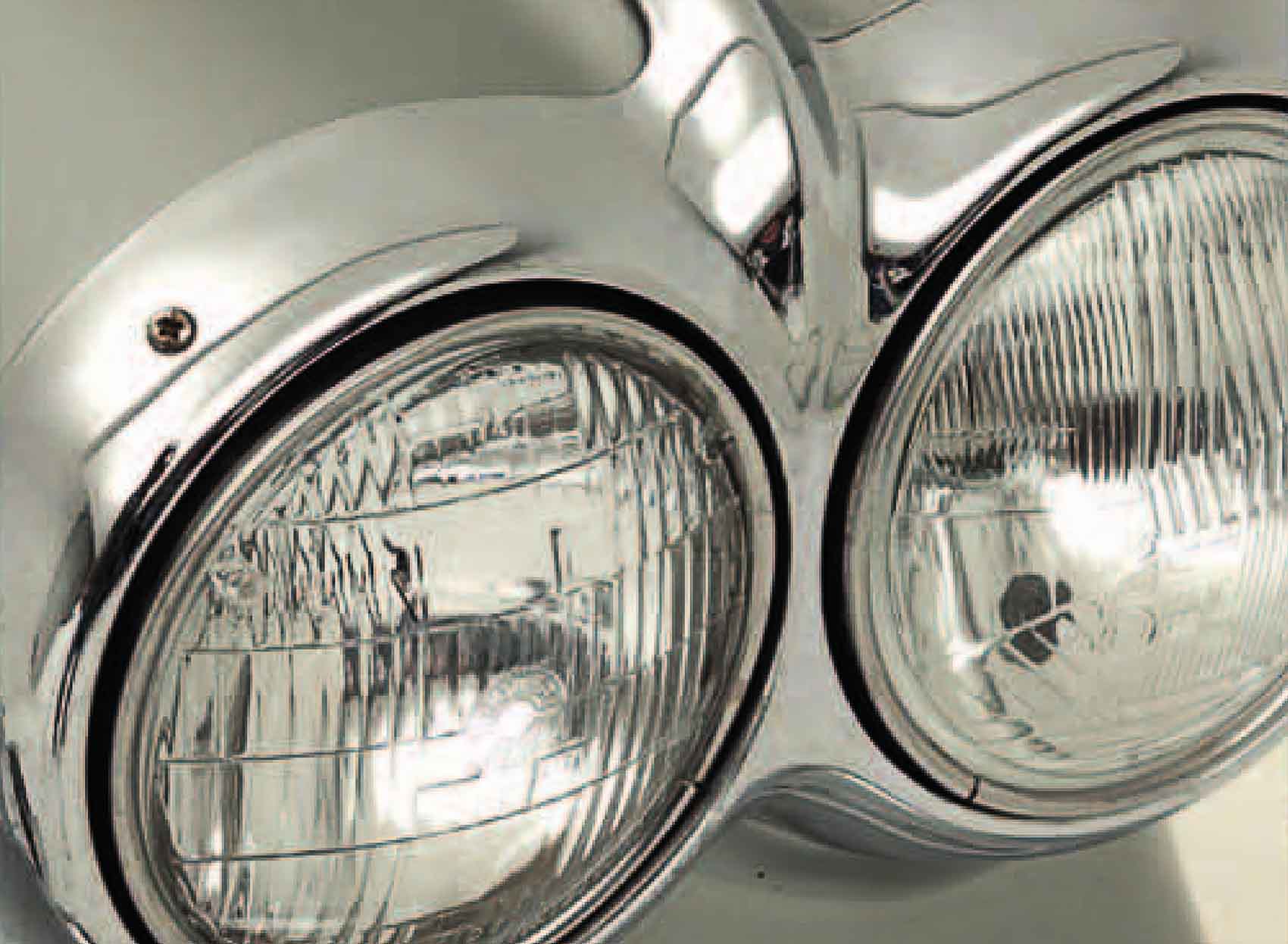
Two headlights on either side from 1958
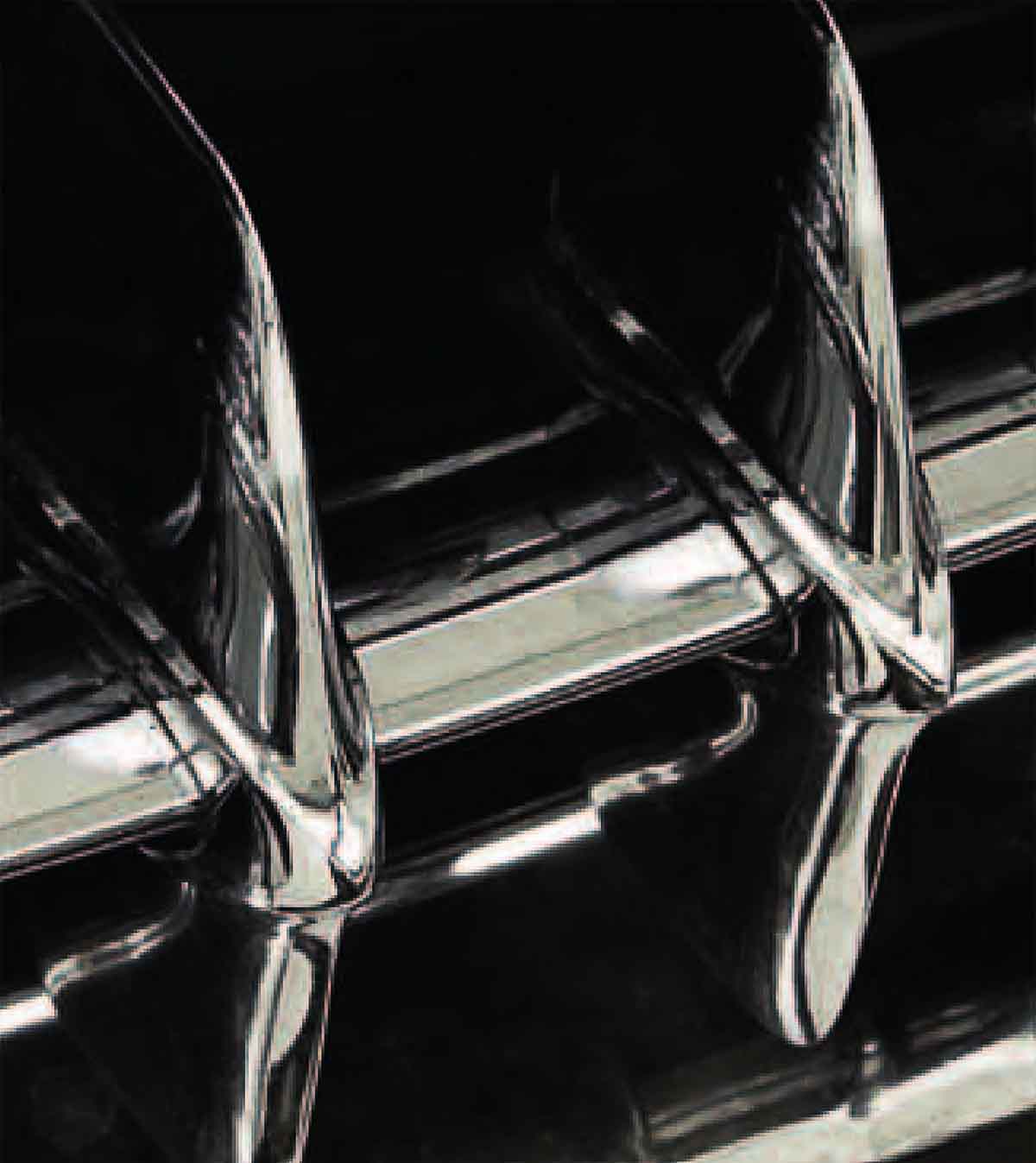
Grill “teeth” would disappear in 1961 restyle
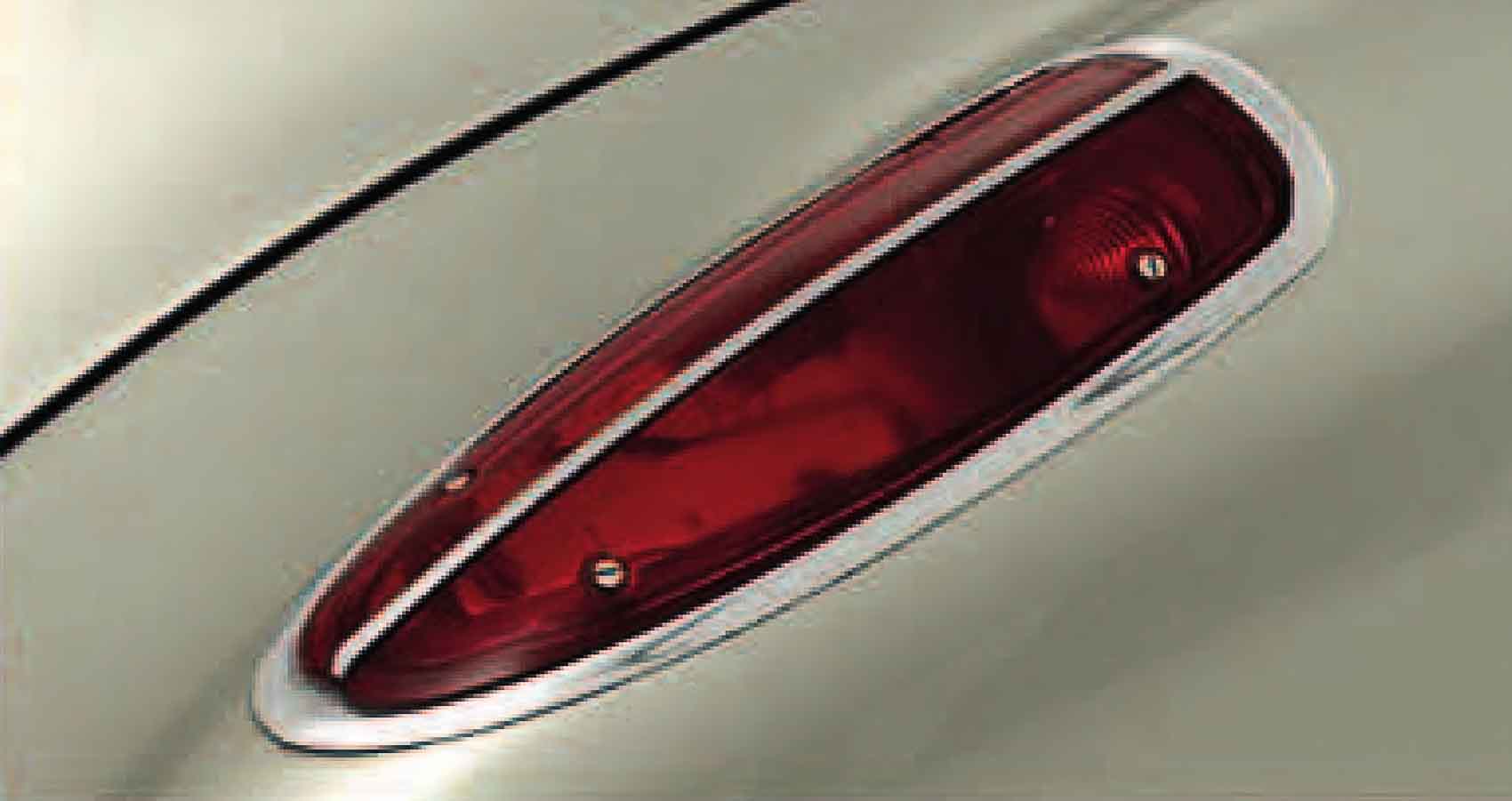
Taillights would be restyled into classic, enduring, “duck-tail” variety in 1961
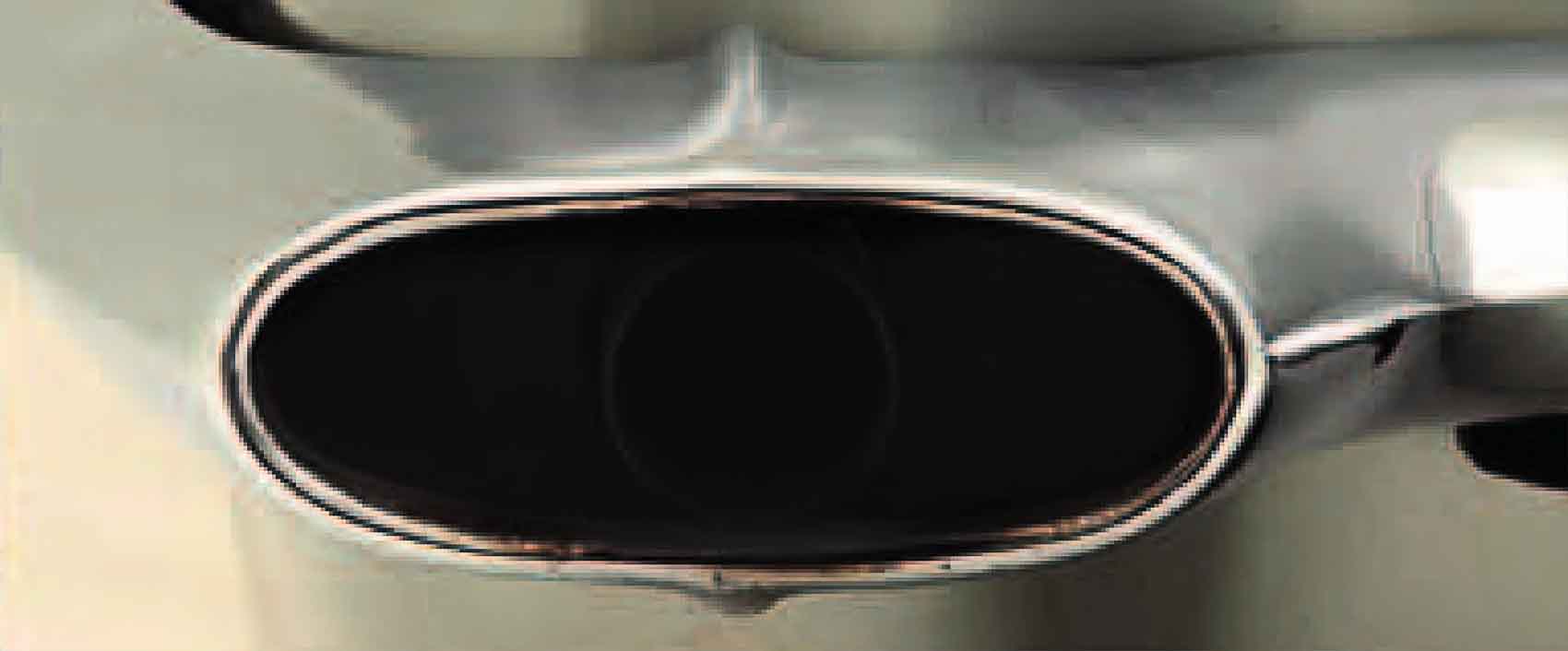
Twin exhausts incorporated into rear bumpers
THE INTERIOR
The original 1953 Corvettes inconveniently had their instruments to the right of the steering wheel, but in 1958 they were moved in front of the driver. Interior colors included red, black, and turquoise; options ranged from power windows to courtesy lights. But it was all about the car’s performance, and in 1959 Chevy touted the Corvette as “a polished instrument strictly designed for driving pleasure.”
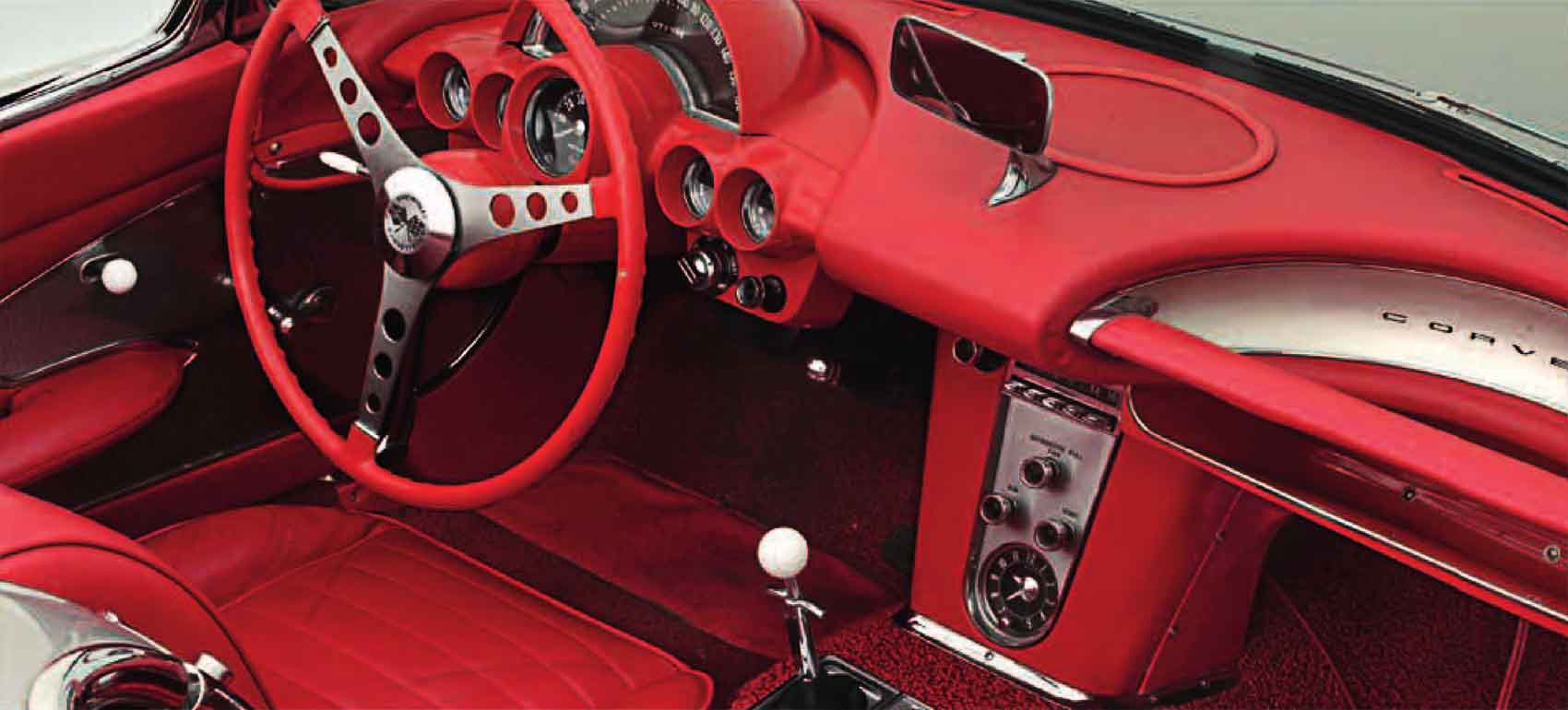
Cockpit with competition-type steering wheel, vinyl-padded dashboard, and passenger grab bar
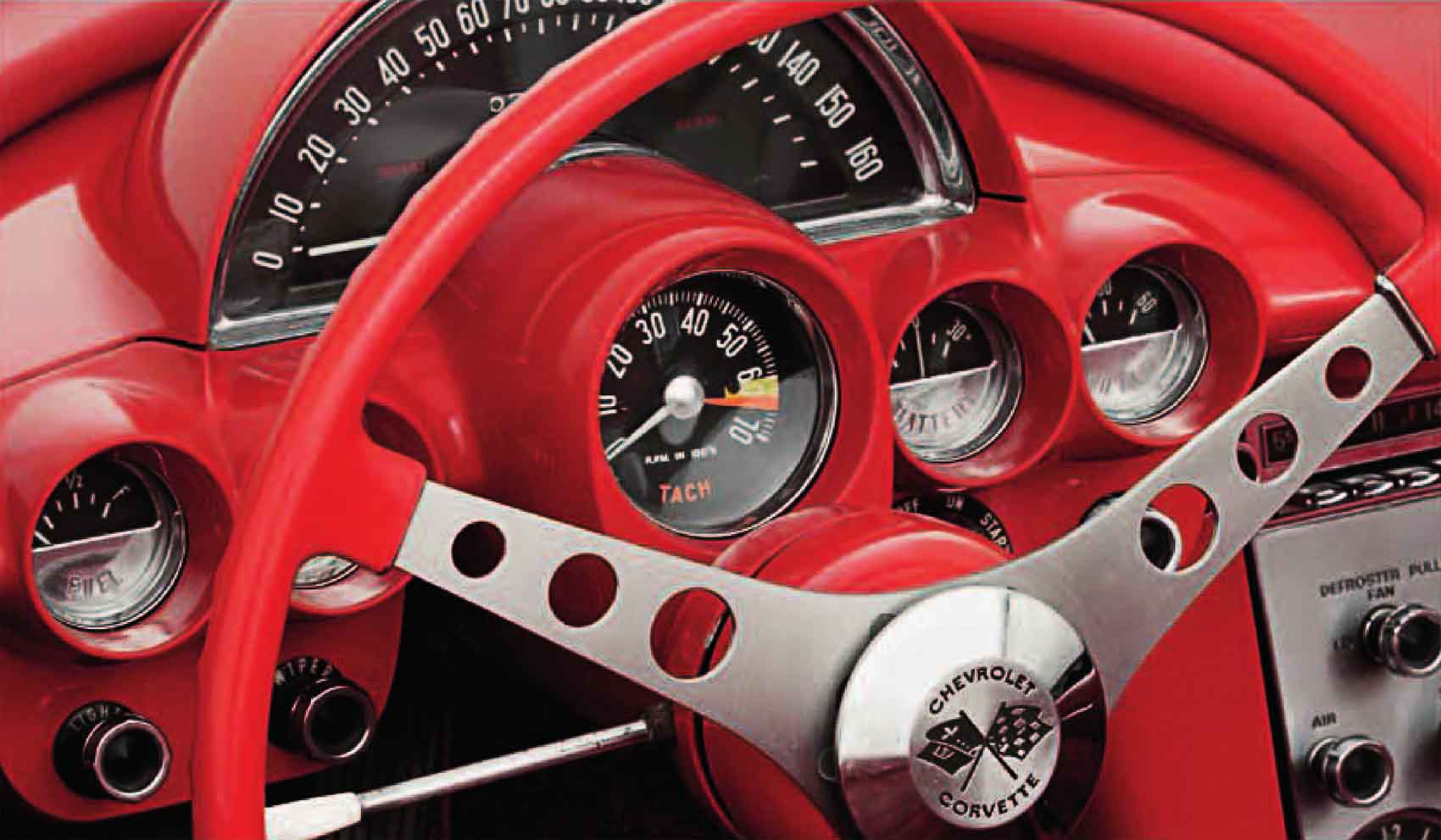
Speedometer ran to 160 mph (257 km/h); below it was a rev counter; other instruments were a battery charge gauge
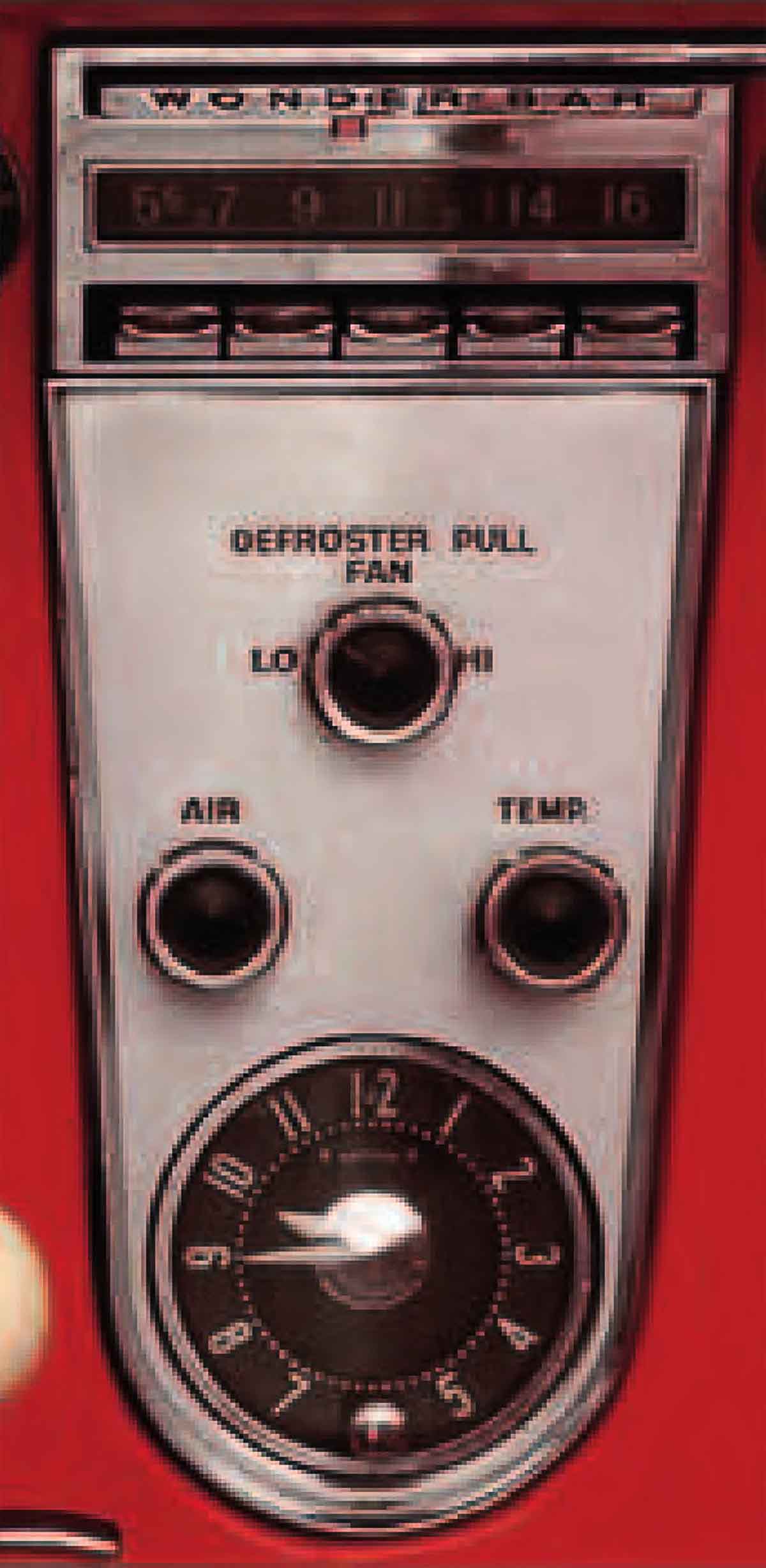
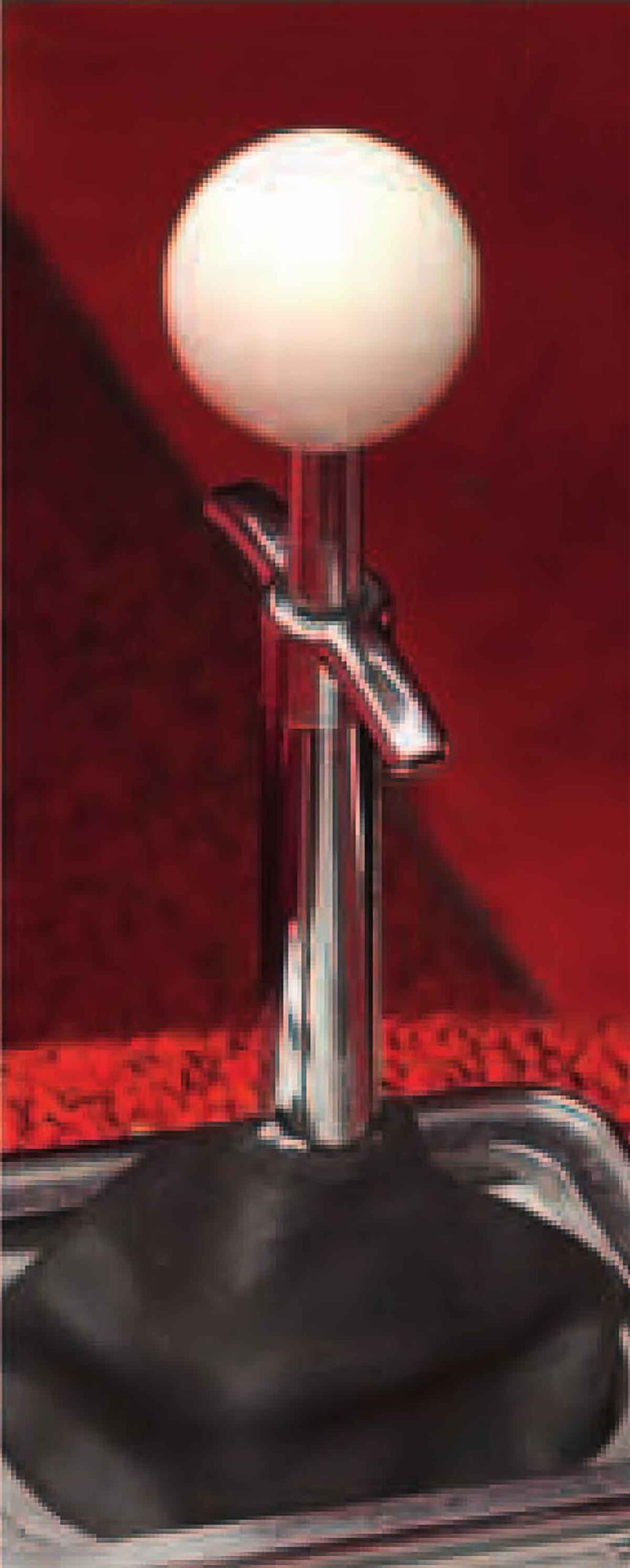
Radio, heater controls, and electric clock
T-shift manual gear stick new for 1959
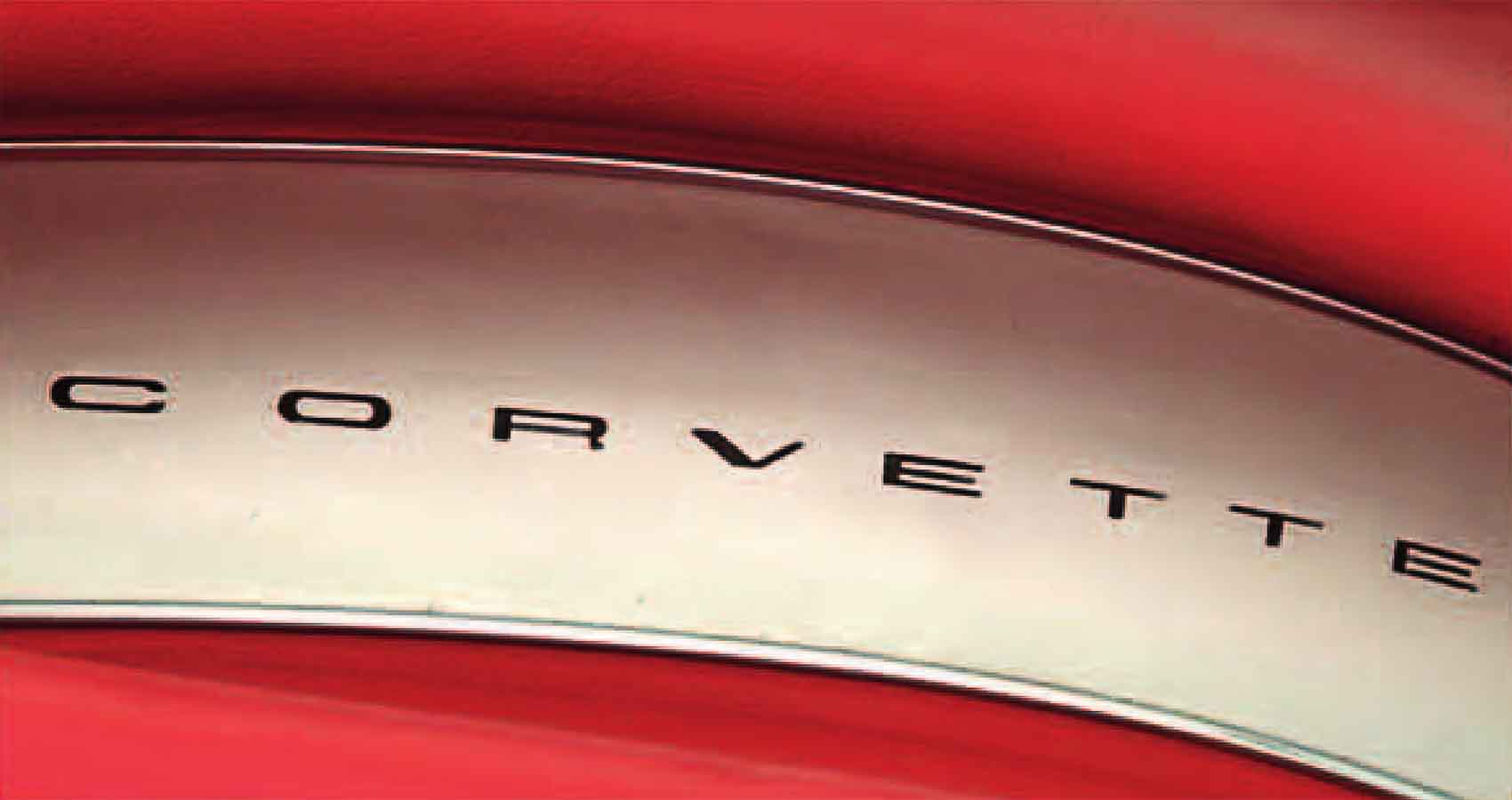
Corvette name taken from type of warship
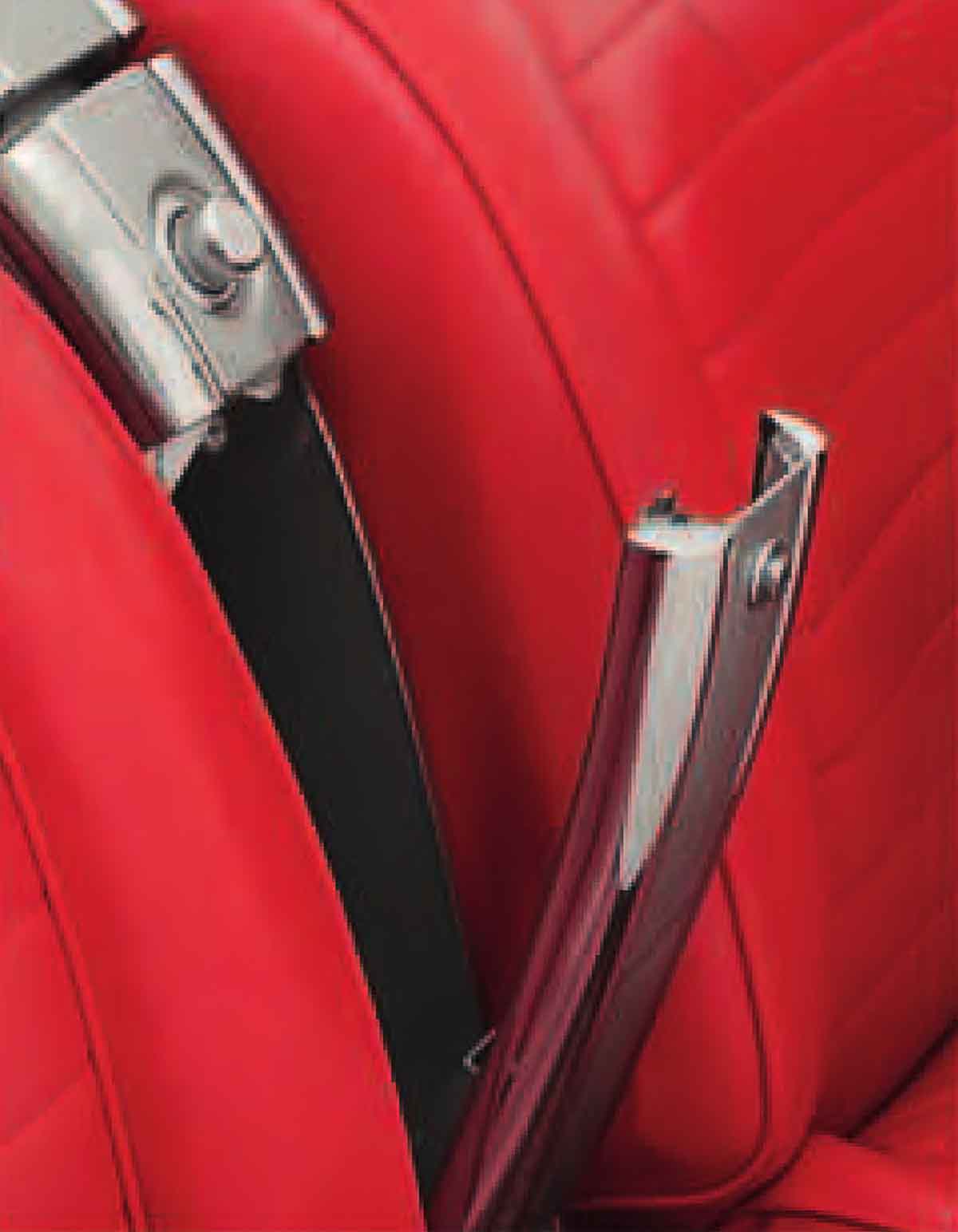
Release for soft-top cover
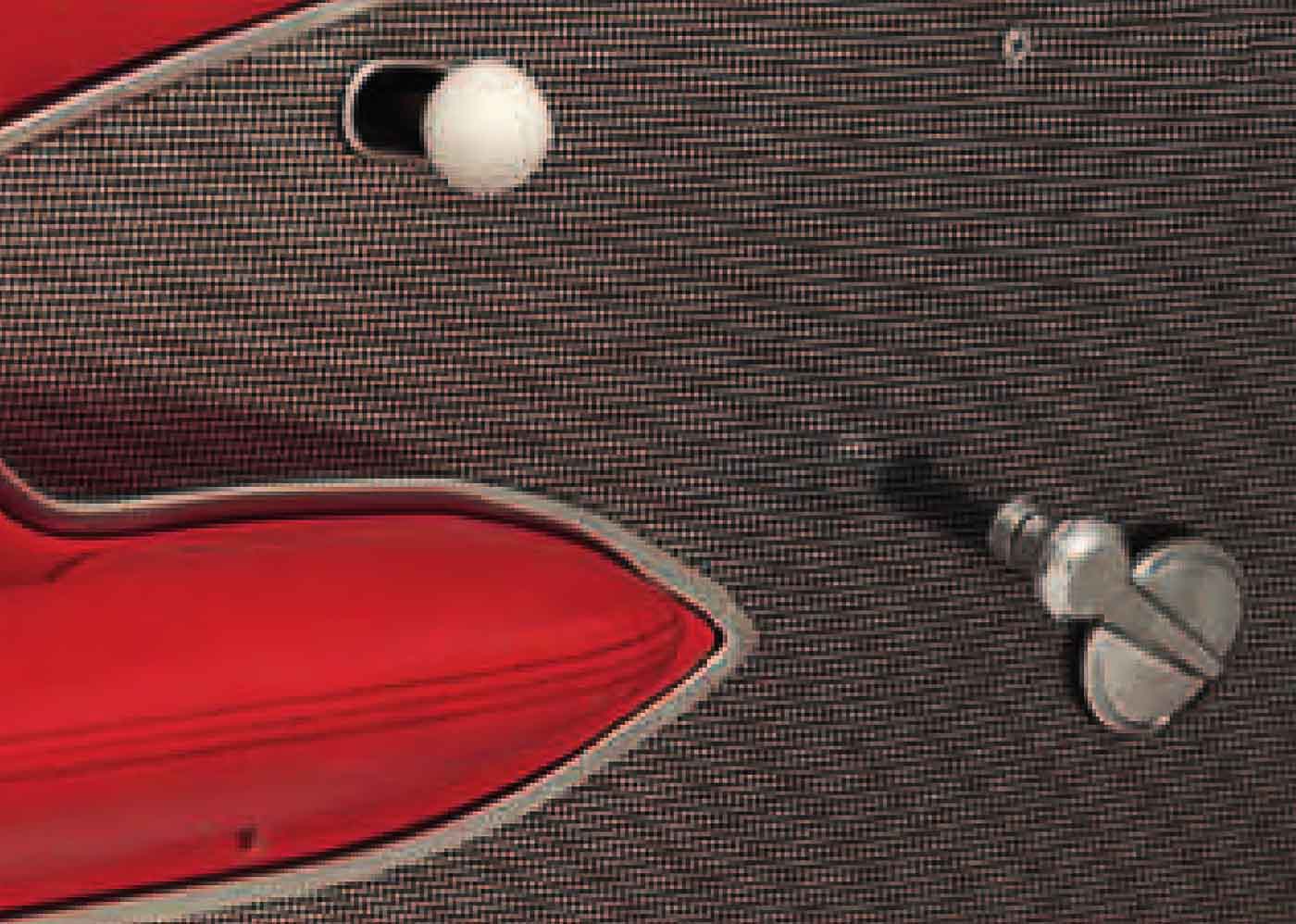
Door release and manual window winder handle
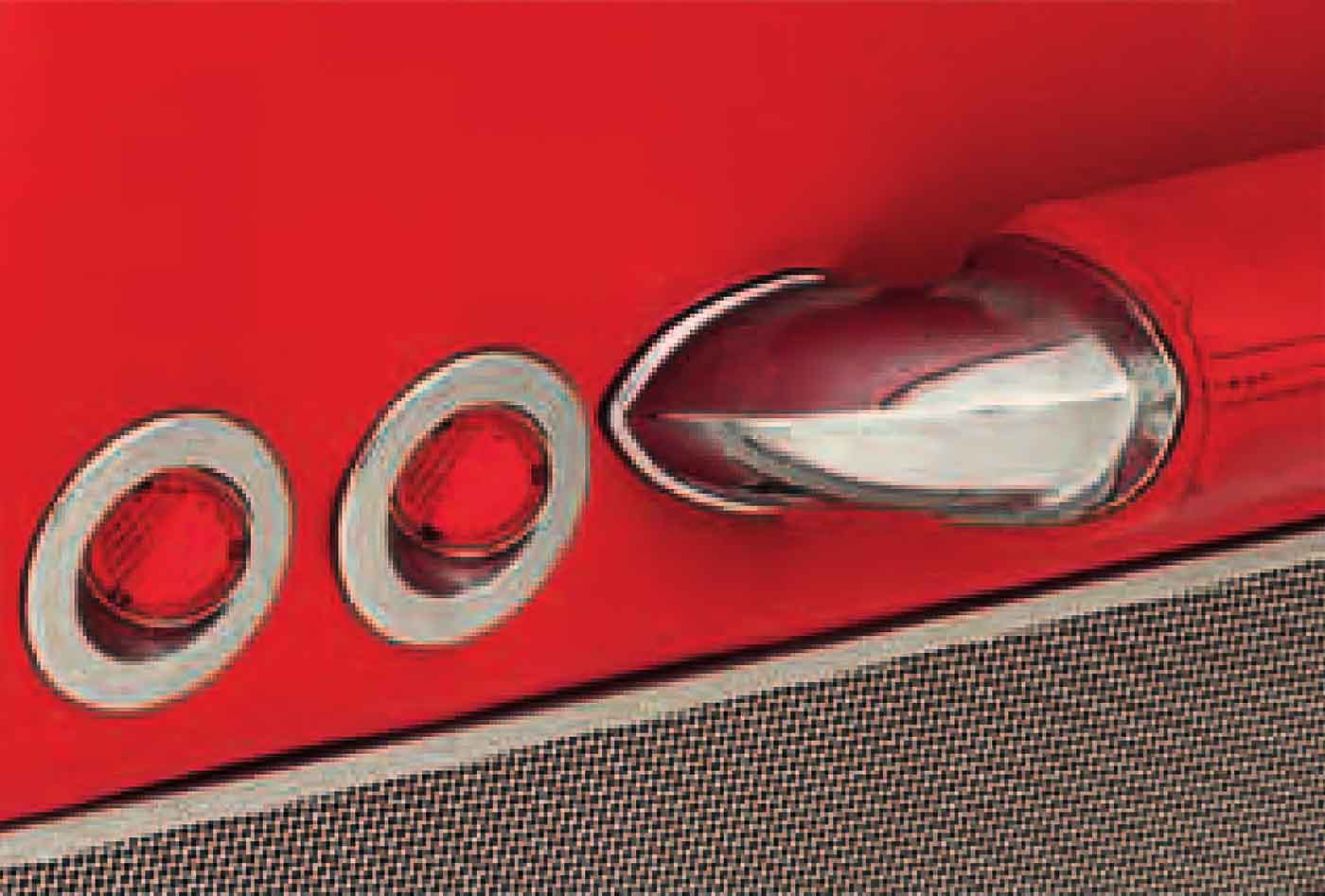
Chrome armrest fixing new for 1959
UNDER THE HOOD
The straight-six was dropped in 1956, and from 1957 a larger 283 cu in (4,637 cc) V8 was fitted. When paired with the new fuel-injection option, Chevrolet was able to declare the Corvette as the first to feature “One hp per cubic inch.” At a time when speed and horsepower counted most, these output figures catapulted the Corvette into the big league in terms of sales and popularity.
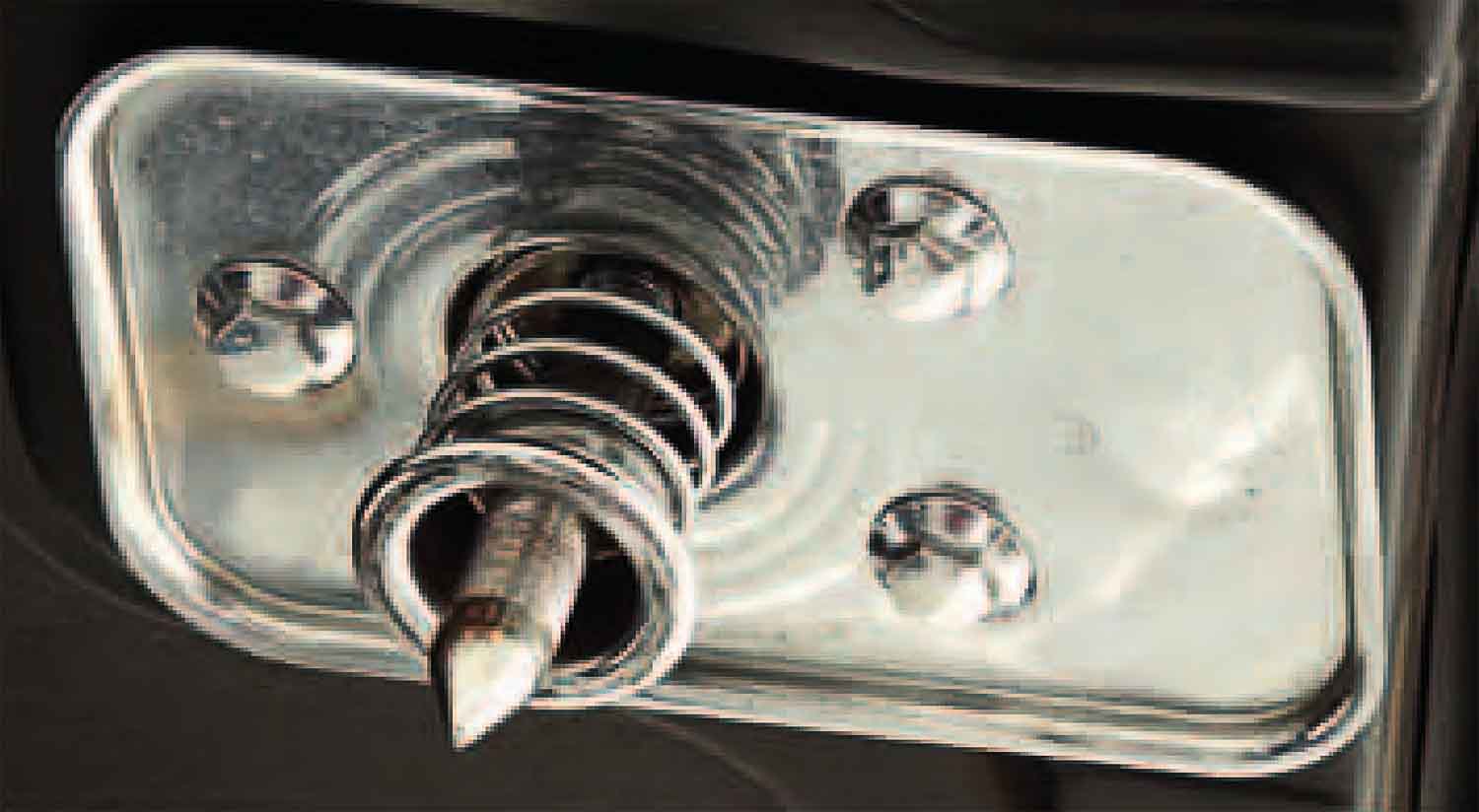
Hood latch under front of hood

Hood hinge part of cable-operated release system
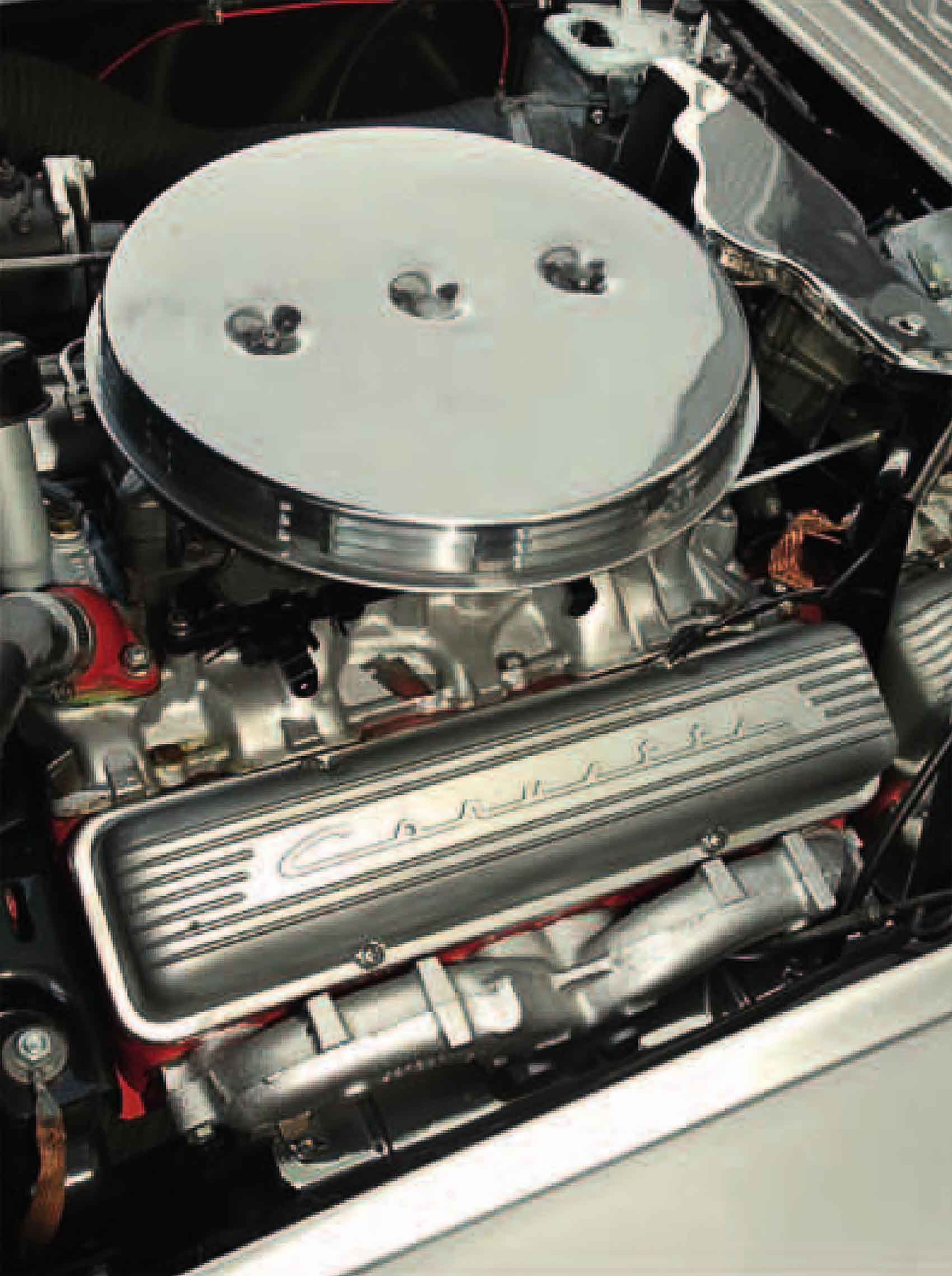
Engine choices in 1959 were twin-carburetor (shown here) or fuel-injected versions of the 283 cu in (4,637 cc) V8
It is a quote. The Definitive Visual History Of The Automobile 2011




